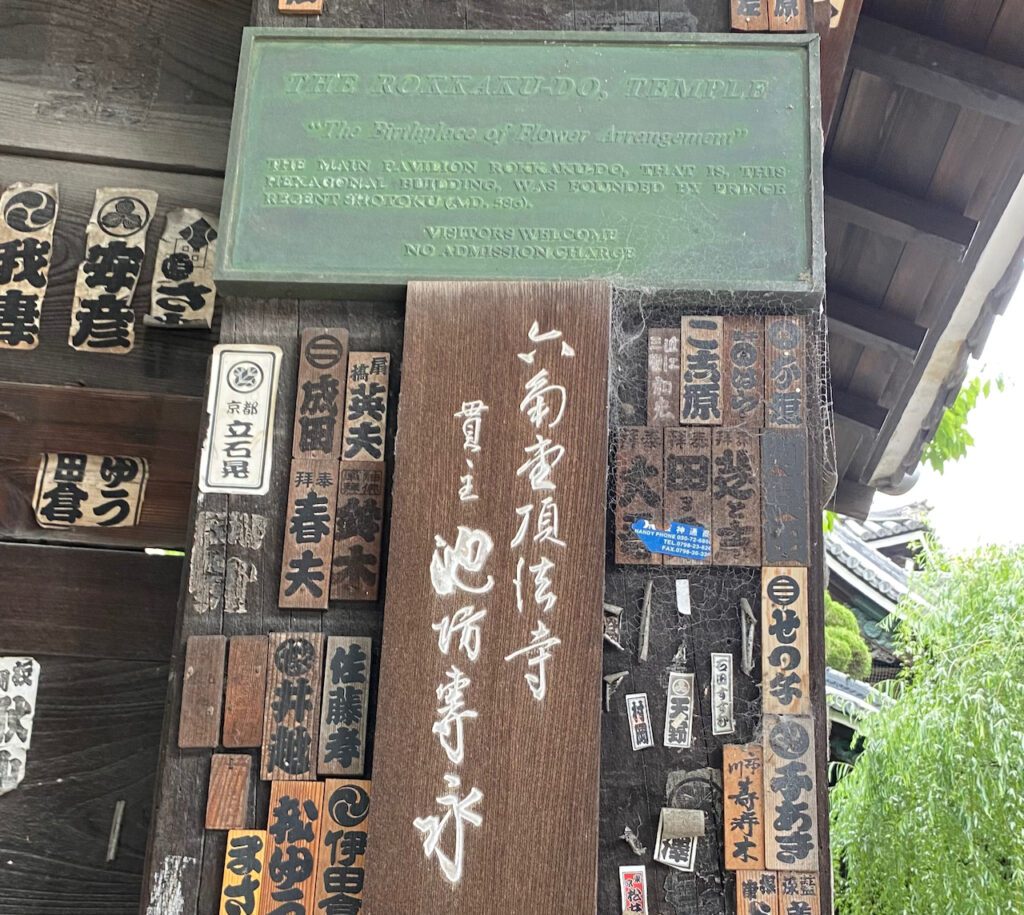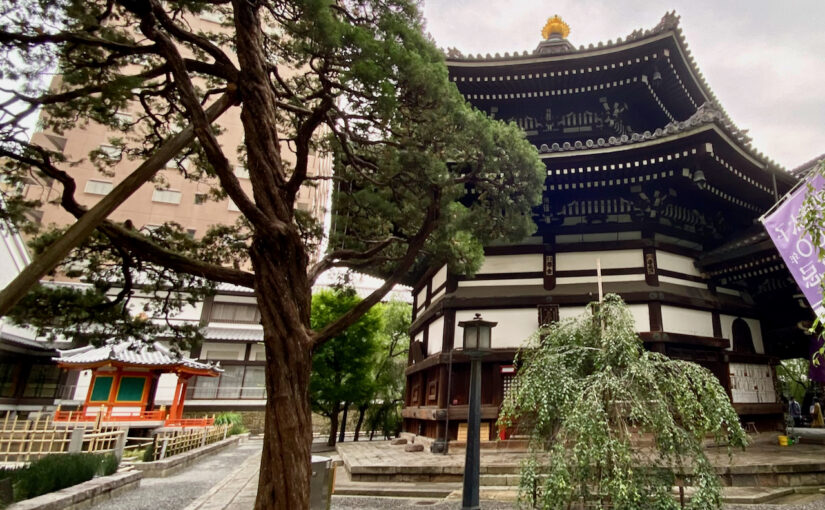A small temple in the middle of Kyoto is the birthplace of Ikebana
Rokkakudo Temple in Kyoto: Photo by Author Akemi Sagawa
In the middle of the city of Kyoto, surrounded by tall, modern buildings of steel and concrete, this hexagonal-shaped temple building stands humbly.
Called Rokkakudo Temple, named after its shape (Rokkaku means hexagon), this temple is far from grander. But for us, the students of Ikebana, the art of Japanese flower arrangement, this temple is a place of significance.

The sign of Rokkakudo Temple says “The Birthplace of Flower Arrangement” Photo by Author Akemi Sagawa
Ikebana, as we know it today, dates back to the Muromachi Period in the fifteenth century.
The ruling samurai clan in Muromachi Period (1336 – 1573) started to build gorgeous houses with alcoves called tokonoma. These alcoves became the special space to display a household’s precious treasures. The samurai showed off their ornate vases imported from China by decorating them on the tokonoma.
It was one of the tasks of the Dohoshu, usually Buddhist monks who served the Muromachi shogunate and other powerful samurai clans, to decorate the tokonoma with beautiful flowers and plants.
One day, Ikenobo Senkei(池坊専慶), a Buddhist monk of Rokkakudo Temple, was invited to a samurai’s residence and made a gorgeous flower decoration. The decoration was so impressive that another monk who saw it wrote how great it was in his journal.
Thanks to this monk’s writing, we know that it was precisely in 1462. Hence Rokkakudo Temple is said to be the birthplace of Ikebana, and the Ikenobo School is said to be the origin of Ikebana.
Ikenobo School is the oldest, and the largest school of Ikebana today. Behind the Rokkakudo Temple is the headquarters of Ikenobo School. Many students come to take classes here.

In front of the headquarters building is an Ikebana sculpture. This sculpture is modeled from a painting of arrangements made by Ikenobo Senko 池坊専好(1575 – 1658).
Source: Ikenobo School Website
